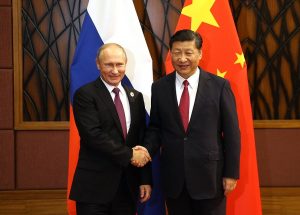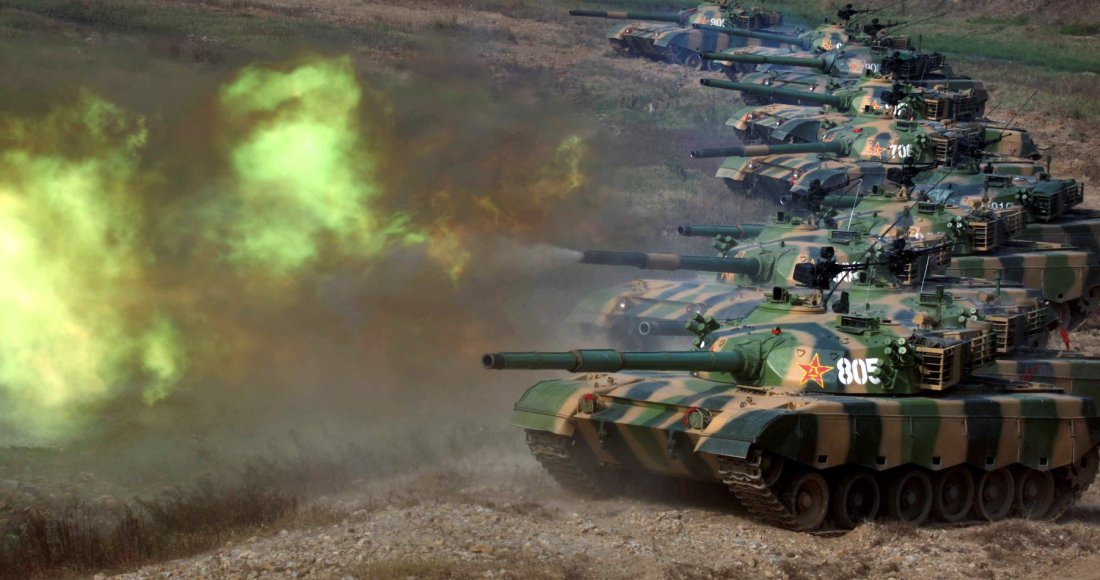The views presented herein represent those of the author, and do not necessarily reflect those of the U.S. government, Department of Defense, or the U.S. Air Force.
For most of U.S. history, the decision to go to war has not been made lightly, in part due to the legal requirements enacted to make it very difficult to do so. In Article II, Section 2 of the U.S. Constitution, the president is tasked with the responsibility of serving as the commander-in-chief of the nation’s armed forces. However, the authority to declare war rests with Congress, as clarified in Article I, Section 8. When a conflict has run its course, it is the president’s duty to negotiate a peace treaty, which is then ratified by the Senate to formally end the state of war. Because wars fundamentally involve the death of citizens and the destruction of property, usually on a very large scale, they are not commenced lightly—every decision to put troops in harm’s way carries a certain degree of political cost. However, the development of autonomous weapons is changing the calculus associated with going to war, by offering the tantalizing possibility of using force without risking the lives of U.S. citizens. By removing the human costs from the equation, military robotics are not only changing the manner in which wars are fought, they are reducing the political barriers associated with going to war in the first place.
The instruments of national power can be categorized into the DIME model (Diplomatic, Informational, Military, and Economic). Each element of the DIME provides the opportunity to influence other nations and non-state actors, and the combination of all of them into a single, unified effort can provide an enormous amount of leverage for the U.S. Traditionally, presidents have attempted to rely upon the non-military options as much as possible, leaving the use of force as a last resort. In part, this is due to international law—overt acts of war are more likely to provoke opposition from disinterested parties than the use of other elements of national power. In part, presidents have been constrained by the possibility of domestic unrest, as the public does not react well to battlefield casualties unless the conflict is perceived as a matter of national survival. The deadliest war in American history, the Civil War, cost the lives of more than 600,000 soldiers—and left the nation with a strong distaste for taking heavy casualties. In the modern era, when the United States has chosen to go to war, it has done so very consciously attempting to utilize technology and industrial production as a means to offset the human costs of national conflicts.
U.S. Casualties in Modern Wars
World War II was the last time the United States formally declared war, entering a conflict that had already cost millions of lives in Europe and Asia. Yet, despite nearly four years of continual fighting, the war resulted in the deaths of 418,500 American citizens. On its face, this seems a terrible cost—until it is compared to the losses of the other major combatants, including our allies the Soviets, who lost 24 million citizens in the same conflict. The battlefields of the Eastern Front were bloody ground engagements conducted on a massive scale. In comparison, the U.S. and Britain spent much of the war attempting to bomb Germany into submission, substituting the technological wonders of airpower for the traditional approach to military conquest. Against Japan, the air war included the firebombing of cities and the only atomic attacks in human history—in large part to prevent the massive casualties expected from a ground invasion.
After World War II, the American reliance upon technology to offset the numbers of potential enemies became even more pronounced, with increasing reliance upon aerial campaigns and the development of extremely sophisticated weaponry. In Korea and Vietman, this led to extremely lopsided casualty counts, although in neither case could it deliver victory. By 1991, the technological dominance of American systems was definitively displayed in Operation Desert Storm, with stealthy airplanes attacking hapless Iraqi formations and the eventual ground invasion wreaking incredible destruction at a cost of less than 400 U.S. troops, more than half of whom died in accidents or fratricidal incidents.
Congressional Control Over Conflicts
At the end of the Vietnam War, Congress passed the War Powers Resolution, an attempt to limit any president’s ability to commence or expand a conflict without significant legislative oversight. After overriding President Richard M. Nixon’s veto, Congress effectively reestablished itself as the ultimate arbiter of when and where the nation should conduct long-term military operations. The War Powers Resolution sought to limit a president’s ability to utilize military force without explicit permission from Congress, essentially reining in some of the excesses of recent events. It required any future president to notify Congress of any deployment of military forces within 48 hours of commencing operations, and to withdraw those forces if Congress refused to authorize them to stay longer than 60 days.
In the 21st century, Congress has proven amenable to supporting the presidency in using military force to counter violent extremist organizations (VEOs), such as al Qaeda and the Islamic State. The 2001 Authorization to Utilize Military Force(AUMF) provided the necessary legal permission for President George W. Bush to deploy forces against al Qaeda and its allies, without setting any geographical or chronological constraints. The AUMF remains in force, and has been interpreted to include combat operations against the Islamic State, which emerged from al Qaeda’s regional franchise in Iraq. The AUMF has been cited to justify combat operations in Asia, the Middle East, and Africa; and there has been no significant move to rescind or restrict the authorization. Three presidents have ordered military operations to be conducted under the AUMF, and so long as al Qaeda remains a viable organization determined to kill Americans, it will likely remain in effect.
The introduction of advanced military robotic platforms is changing the calculus of how the elements of DIME work together, and at the same time, making the military option a much more attractive choice in many circumstances. In part, this is due to capability—military robotics offer an offensive option of such precision and range as to increase the chances of successfully striking a given target. It is also due to the lowered risk associated with conducting military operations from a standoff distance without placing U.S. military personnel into harm’s way. The most advanced systems, if developed and placed into the field, might essentially remove all political risk from the resort to military operations, and hence make offensive action substantially more likely to occur in a given situation.
Another significant factor in the use of robotic platforms to conduct violence comes in the separation between military and intelligence forces. In the United States, the military is governed by Title 10 of the U.S. Code, while intelligence agencies are governed by Title 50. The different rules that apply to each service in terms of transparency and the use of force have been a key element in the use of remote-controlled platforms in the War on Terror. Both the Department of Defense and the Central Intelligence Agency have chosen to utilize such aircraft to launch strikes against enemy forces. However, according to the War Powers Resolution, the president is only required to report the actions of the military to Congress; it makes no mention of the CIA or similar organizations. Under international law, a lawful combatant must bear arms openly; wear a uniform or recognizable insignia; maintain an organizational structure holding leaders responsible for the behavior of subordinates; and follow the laws of war. There is no effective way to adapt that law to apply to robotic platforms—they are not able to precisely follow it, but they also do not inherently violate it. As such, they fall into a very attractive gray area regarding the use of force between belligerents, one that might be exploited by any commander-in-chief under the current approach to military robotics.
Autonomy and Lethality
“Autonomy” is a term that refers to a machine’s ability to make decisions based upon environmental factors without further human input. It may be severely constrained, often by limiting the number of available responses, or requiring extremely specific stimuli to trigger a response. In theory, it could be effectively unlimited, by allowing a machine to respond to its environment in any fashion it deems fit, although no such system has yet been developed. Kenzo Nonami, Farid Kendoul, Satorshi Suzuki, Wei Wang, and Daisuke Nakazawa collaborated to define autonomy in terms of a series of steps. A machine with a level of autonomy rated as five or greater, on a scale of ten, would probably not react in the same fashion as a human being when facing the same situation, due in large part to its different perception of the environment and the lack of any emotions influencing its cognition. As such, it is improper to think of such a machine as an artificial version of human intelligence—although it undoubtedly possesses its own form of intelligence. One of the key points within Nonami et al’s hierarchy of autonomy is the question of when an artificially intelligent machine is given the ability to make lethal decisions without human input or oversight—particularly if such a machine is utilized in an offensive fashion. Because their system is designed only to define autonomy, and not specific autonomous actions, it does not have a specific level for the introduction of lethality—but it is clear that it could be done by a machine at level three or above.
Lethal autonomous machines have been used by American military units for several decades. The most well-known system, the Patriot Missile, serves as an air-defense weapon against enemy aircraft and missiles. It has a fully autonomous mode, allowing the battery to classify inbound targets as hostile, track their movements, and attack them at its own discretion. Although such a mode is necessary in point-defense weapons, which must detect and engage the enemy and its weaponry at a speed much greater than human reflexes allow, it has remained an element of defensive platforms to date. Such systems have advanced a great deal since the American public took note of the Patriot during the 1990-1991 Gulf War. For example, the Israeli Iron Dome system, primarily designed and produced by Rafael Defense Industries, has proven extremely effective at classifying inbound missiles and projectiles, determining their likely impact point, and engaging or ignoring them based upon the likelihood of human casualties at the projected impact points. While not perfect, Iron Dome’s public track record has likely had a deterrent effect upon non-state actors, such as Hamas and Hezbollah, who have a long history of firing missiles toward inhabited Israeli territory. Knowing that the probability of inflicting significant casualties upon the target population has dropped, the return upon the necessary investment for such attacks has declined to the point of making them almost useless as anything but an empty gesture of defiance. Further, Rafael has continued to upgrade the system to make it more cost-effective, resulting in Iron Beam, a high-energy laser defense system.
Despite the obvious utility of defensive weapons with substantial autonomy, thus far there has been no overt effort to deploy similar machines to the battlefield in an offensive capacity. However, it is not difficult to envision the creation and usage of such machines, and the violence they might unleash. Robots have mostly been relegated to performing the dull, dangerous, and dirty tasks that humans prefer to avoid. Unfortunately, when that concept is applied to weaponry, particularly if used for conquest, robots offer a potential means to eliminate the need for humans to be involved in the dangerous and dirty task of killing other humans. Already, remotely piloted aircraft (RPA) prowl the skies over Afghanistan, Iraq, Pakistan, Syria, and Yemen, seeking out appropriate targets in the War on Terror. Pilots operating such vehicles sit far away from the site of the war, rendering them immune from the physical effects of the conflict. However, they cannot avoid the psychological toll of such activity—both the boredom of endlessly scanning the terrain for movement, and the emotional investment associated with taking a life, even one belonging to a sworn enemy. Not surprisingly, RPA operators demonstrate high levels of post-traumatic stress disorder (PTSD), on approximately the same scale as troops engaged in combat in the same theaters of war. It is almost inevitable that some policymakers, inside the Pentagon and out of it, will seek to alleviate this stress by removing humans from its source. Rather than eliminating the RPA program, which has been remarkably effective at hunting down and killing members of terror organizations, they are likely to push for greater autonomy in the machines of modern war.
Ramifications of Autonomous, Offensive, Lethal Weapons
Taken to its logical extreme, the development of autonomous, lethal machines capable of offensive action might render the War Powers Resolution obsolete. Because it requires the president to notify Congress of the deployment of troops, there is an inherent expectation that it pertains to humans—and if a commander-in-chief does not actually deploy military personnel outside of the nation’s borders, it might not be necessary to keep Congress inside the decision cycle. While the current generation of RPAs require a substantial ground element of personnel for takeoff and landing operations, and typically are based far closer to their intended areas of operations than would be possible from the United States, there are a host of systems in development that would not require such a large contingent of military personnel in a foreign location. Thus, further developments along this technological path might ultimately offer a future president the ability to conduct warfare with impunity, secure in the knowledge that no American personnel will be forced to deploy to a combat zone. Instead, a virtually limitless force of robotic “mercenaries” might be sent to any location on the planet, without any significant legislative oversight, and left there indefinitely to engage in violence against the local inhabitants. Politically, such a move might even be popular, as it would demonstrate resolve against terror groups without risking American troops in the process.
Were such a situation to come to pass, it is highly unlikely that VEOs would give up their ambitions to hurt the United States and its allies. Instead, such a scenario would almost certainly incentivize them to step up efforts to attack American citizens, particularly civilians, in any location they can be reached. The burden of casualties in the War on Terror might thus shift from the military force, which accepts the possibility of being wounded or killed as an aspect of military service, and transfer it to tourists, embassy personnel, students engaged in foreign exchange programs, and members of the media. This violence would, in turn, provide the necessary cause for the president to continue the use of offensive action through robotic platforms, perpetuating the conflict into an indefinite length.
 After 26 years in operation, India’s Jet Airways had its final flight last week, following a refusal by lenders for emergency funding. The lenders’ action came as a result of a string of missed debt-servicing payments by the airline and disagreement over whether it could be revived under the management of its founder and 51% equity owner, Naresh Goyal.
After 26 years in operation, India’s Jet Airways had its final flight last week, following a refusal by lenders for emergency funding. The lenders’ action came as a result of a string of missed debt-servicing payments by the airline and disagreement over whether it could be revived under the management of its founder and 51% equity owner, Naresh Goyal.














